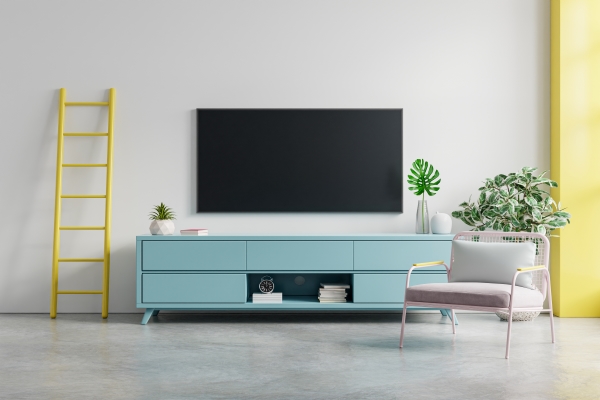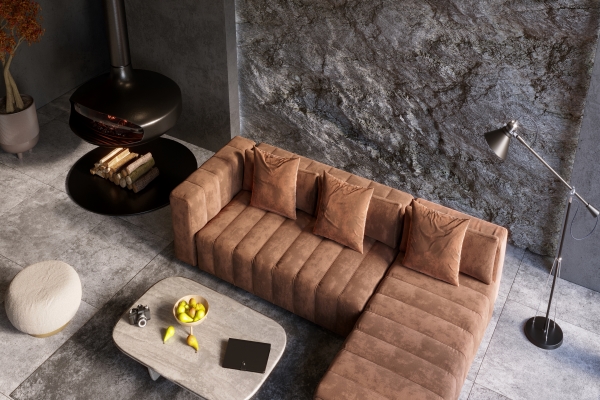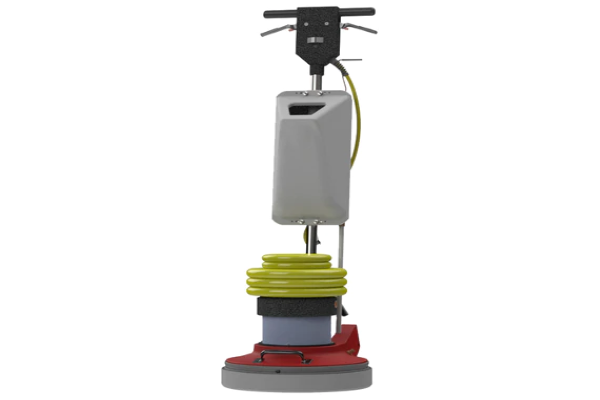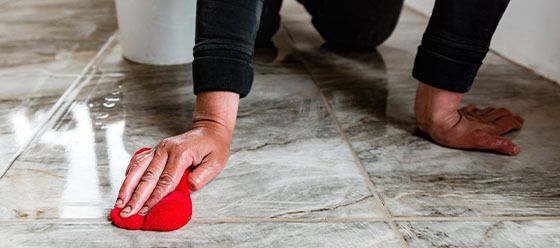If your tile floor has lost its shine, you may be considering re-polishing it. However, before you go to all that trouble, you may want to try buffing the floor first. Buffing can often restore the shine to a tile floor without re-polishing.
Tile floors are a great way to update your home’s look while conserving floor space. But if you have carpet or linoleum throughout, you’ll know that tile is a long way off until you’re ready to pull the trigger on replacing your whole floor.
Even if you have a few tiles in a bathroom or kitchen, you’ll need to make the most of them. Thankfully, buffing is an easy way to give the old tile a new lease on life and make it look brand new. Here’s everything you need to know about buffing a tile floor.
The 3 Different Types Of Tile Flooring
There are three main types of tile flooring: ceramic, porcelain, and natural stone. Each type of tile has its own characteristics and requires different methods of buffing.

Ceramic
Ceramic tiles are made from a kiln-fired mixture of clay and minerals. They’re usually finished with a glaze, making them more difficult to buff.

Porcelain
Porcelain tiles are also made from clay and minerals, but they’re fired at a higher temperature than ceramic tiles. This makes them more durable and less likely to chip or crack. Porcelain tiles don’t usually have a glaze, making them easier to buff.

Natural Stone
Natural stone tiles are exactly what they sound like – they’re made from natural stone, such as marble, granite, or slate. Natural stone tiles are the most difficult to buff, as they can be easily scratched or damaged.
What Is Buffing?
Buffing tile floors is a technique used to remove stains and damage. Instead of sanding the floor to smooth out the surface, a buffing machine applies high pressure to break down the stained area.
Dry buffing is a popular buffing type. Spray buffing with a buffing solution is another method for cleaning and restoring tile floors. This method uses a buffing machine with a spinning brush attachment. The brush is dipped into a solution and then applied to the floor.
The result is a much cleaner, more uniform surface. This also allows you to refinish wood decks and other surfaces by applying the buffing technique. When buffing a tile floor, you’re removing the surface oils left behind by foot traffic or whatever the dirty floor has been used for.
Why Do You Need To Buff A Tile Floor?
There are a few reasons you might need to buff tile floors. The most common cause is that the tile has become stained and no longer looks clean. Another reason to polish tile floors is that the tile may have lost its glossy finish and now looks dull.
If your tile floor looks a bit worse for wear, buffing it may be the best way to restore its original appearance.
How To Buff A Tile Floor
First, make sure the tiles on your floor are dry. If the floor is still wet, the buffing tools will end up with a dirty build-up on the surface, which will make the floor look worse.
If the tiles have a greasy or stained look, you’ll first need to dry them out. By using a semi-dry mop or putting down some industrial-strength absorbent paper, you can do this.
Use a clean cloth to buff out any remaining grease or stains. Start at one end of the floor and mop in one direction. Then, switch to the other direction with the same cloth. Buff the entire floor this way, starting at one end and working your way across.
Tools You’ll Need To Buff A Tile Floor
To buff a tile floor, you’ll need a few supplies, including:
Buffing machine: You can rent a buffing machine from your local hardware store.
Cleaning solution: A mild cleaning solution will do the trick. You can also use water if your tile floor is not too dirty.
Bucket: A bucket will be needed to hold the cleaning solution.
Mop: You’ll need a clean dust mop to apply the cleaning solution to the wet floor before buffing.
Old towels or rags: Old towels or rags can be used to clean up any water or cleaner that is left behind after buffing. A microfiber cloth is also a good option.
You'll need a buffing machine if you’re starting the buffing process from scratch or have a few stained tiles. Depending on the machine and features, these can cost anywhere between $300 and $750.
You can find cheaper machines if you have a budget, but beware of the prices dropping on refurbished models. You can find buffing machines at most tile stores and online retailers.
A buffing pad, which machines come with, is also essential for a smooth, even finish. Buffing pads are designed to help you apply the same pressure across a large area, which is crucial when buffing a tile floor. Buffing pads are available in different densities, so make sure to use one that’s the right level for your tiles.

Get Started Buffing A Tile Floor
Before you get started, make sure that the floor is dry. This can be done by wiping the floor with a dry cloth, or if it’s already dry, you can use a semi-dry mop.
Next, find a floor burnisher machine and buffing pads. To make sure the floor is completely clear, you need to start buffing from the beginning. To do so, find the first tile and buff that tile to a uniform, glossy look.
Work your way across the floor, starting from one end and working back to the other. You can use a mop to get the dry stains out of the floor or a broom to remove any debris left over from construction. Buff the entire floor, from top to bottom.

Make Sure The Tile Floor Is Dry
Before applying the sealant, you’ll need to make sure the floor is completely dry. You can do this by using a fabric squeegee to remove any water or by mopping the floor with a dry cloth.
Finally, apply the sealant. Since buffing is done to remove the oil and stains, you’ll need to use a sealant to keep the tiles in good shape.
While there are many different sealants, we recommend using the Zinsser brand because it’s a tried-and-true, professional-grade product. It’s not expensive, and it lasts a long time, making it perfect for keeping your tiles in good condition.
What Results Can You Expect From Buffing A Tile Floor?
Buffing a tile floor can make a big difference in the room's overall appearance. It’s an inexpensive way to refresh a space, and it can be done in a day.
The results will depend on the tiles' condition, and how much wear and tear they’ve been subjected to. You can expect the tiles to look shinier and brighter after buffing.
Buffing a tile floor is designed to give a uniform, clean surface. This means all the tiles will have the same look or at least a similar look.
You'll see a stark difference if you have a carpet or linoleum floor underneath once the tiles are buffed. The buffed tiles will have a uniform and glossy look, while the carpet and linoleum will look dull and cloudy.
The Advantages Of Buffing A Tile Floor
There are many advantages to buffing a tile floor, including:
- You can reuse the tiles.
- The floor will have a uniform, clean look.
- The tiles will be easier to clean.
- You can apply a sealant to protect the floor.
The most significant advantage of buffing a tile floor is reusing the tiles. If you’ve got a kitchen or bathroom with many mismatched tiles, you can buff the whole floor and then recoat the tiles with a special sealant.
This makes it easy to paint, stain, or install different kinds of flooring in the same space, saving on flooring costs while still looking great.
Disadvantages Of Buffing A Tile Floor
There are a few disadvantages to buffing a tile floor, including:
- You need to have the right equipment.
- You need to be careful not to damage the tiles.
- The results may not be perfect.
The biggest disadvantage of buffing a tile floor is that you need to have the right equipment. This includes a buffing machine and buffing pads. If you don’t have the right equipment, you could damage the tiles.
Another disadvantage is that the results may not be perfect. If the tiles are old or damaged, they may not look as good as new after buffing.
Finally, you need to be careful not to damage the tiles when buffing them. If you’re not careful, you could get scratches or other damage.
Tips On How To Buff A Tile Floor
Here are some tips on how to buff a tile floor:
- First, sweep or vacuum the floor to remove any dirt or debris.
- Next, dampen a mop in warm water and vinegar solution.
- Then, using circular motions, mop the floor's entire surface.
- Once you've mopped the floor, allow it to dry completely.
- Next, buff the floor with a soft, clean cloth.
- Finally, vacuum or sweep the floor again to remove any remaining dirt or debris.
Buffing your tile floor is a quick and easy way to restore its shine. You can make your tile floor look new again with just a little elbow grease!
Looking To Buff Other Surfaces?
In addition to tile floors, you can also buff:
- Countertops
- Walls
- Appliances
- Knives
- Windows
- Glass
- Stainless steel
- Copper
- Brass
- Bronze
Any surface that is smooth and nonporous can be buffed to a shine!

Conclusion
Buffing a tile floor is an easy way to bring old, stained tiles back to life. You can remove the build-up on the tile by buffing, removing the stains and oils from the tile, and then applying a sealant to keep the floor in good condition for years to come. While buffing a tile floor can be time-consuming, it’s well worth it for the results. Shop a wide ride range of Mastercraft machines for different projects such as floor srcubber, ash vacuums, carpet extractors, flood relief, air blowers, floor machines, asbestos removal, and more.
1 Comment